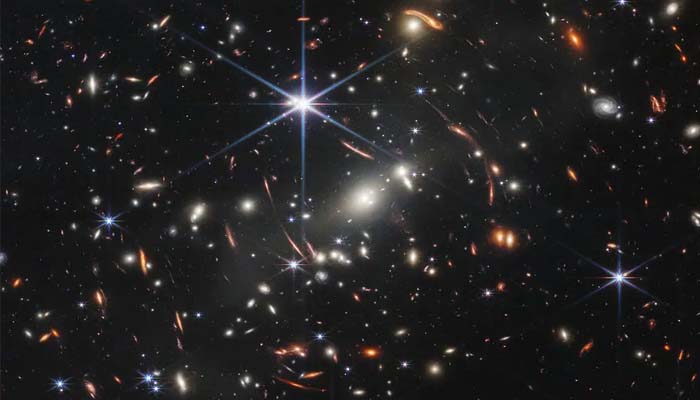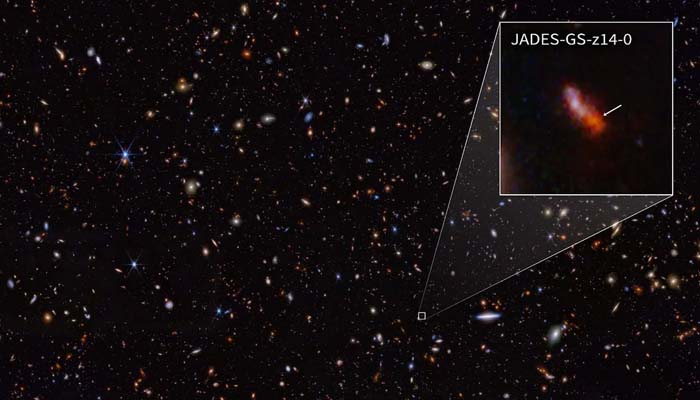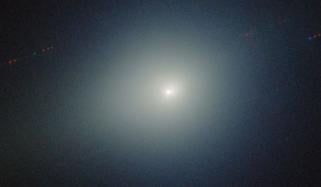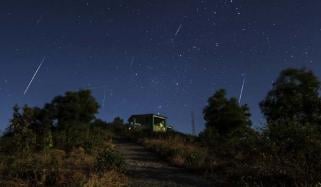
The National Aeronautics and Space Administration’s (NASA) powerful telescope, the James Webb Space Telescope (JWST), has captured the most distant known galaxy after observing ‘cosmic dawn’ for the past two years.
NASA explained in a press release that “Cosmic dawn is when the first galaxies grew to fruition and began to affect the universe around them.” The galaxies give scientists an insight into how stars, black holes and gas changed when the universe was in its infancy.
A team of international astronomers used the JWST telescope in October 2023 and January 2024 to observe galaxies as part of the JWST Advanced Deep Extragalactic Survey (JAMES) program, Science Daily reported.
During this program they collected the spectrum of a record-breaking galaxy 290 million years after the big bang.

Stefano Carniani from Scuola Normale Superiore in Pisa, Italy, and Kevin Hainline from the University of Arizona in Tucson, Arizona, revealed the details about how the galaxies were found.
Astronomers said, “In January 2024, NIRSpec observed this galaxy, JADES-GS-z14-0, for almost ten hours, and when the spectrum was first processed, there was unambiguous evidence that the galaxy was indeed at a redshift of 14.32, shattering the previous most-distant galaxy record (z = 13.2 of JADES-GS-z13-0).”
They expressed, “Seeing this spectrum was incredibly exciting for the whole team, given the mystery surrounding the source.”
Astronomers noted, “We see that the colour of the galaxy is not as blue as it could be, indicating that some of the light is reddened by dust, even at these very early times.”
As per the press release by the observers, “All of these observations, together, tell us that JADES-GS-z14-0 is not like the types of galaxies that have been predicted by theoretical models and computer simulations to exist in the very early universe.”















